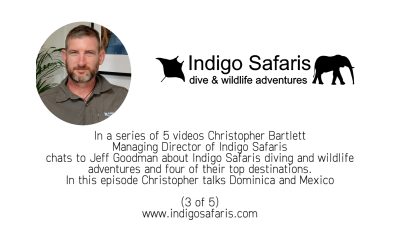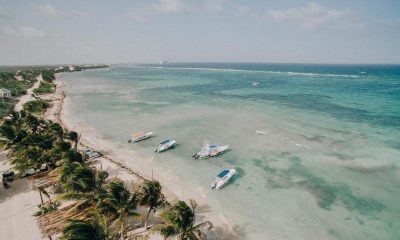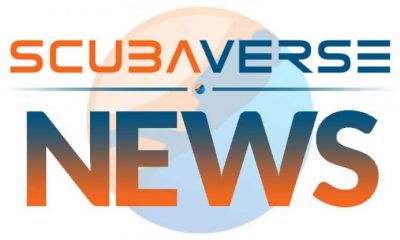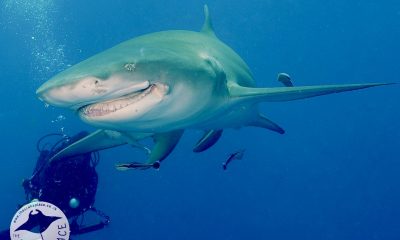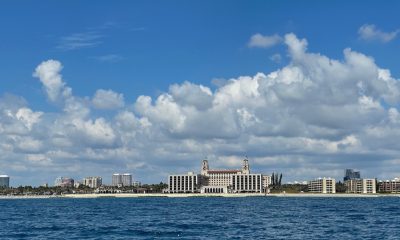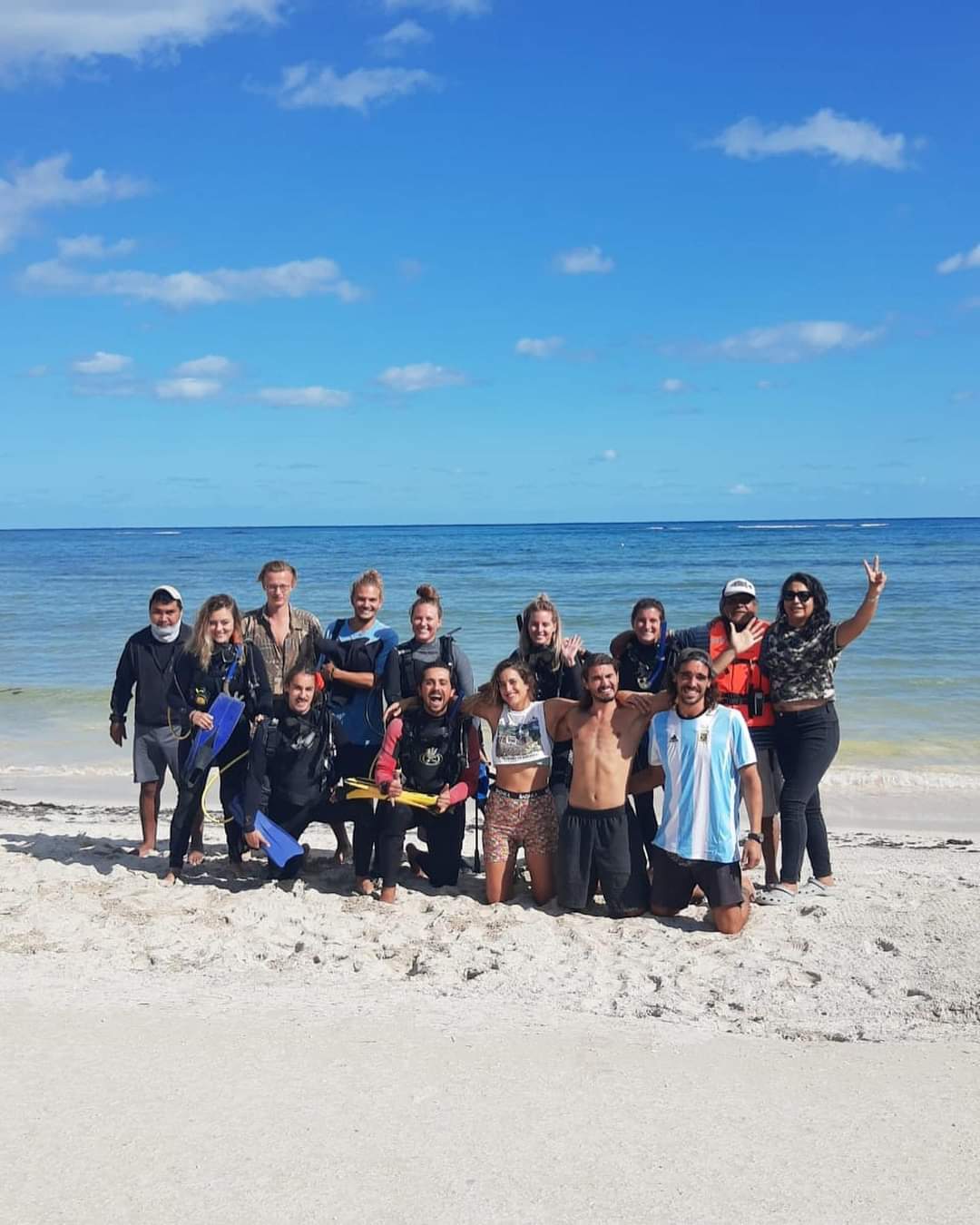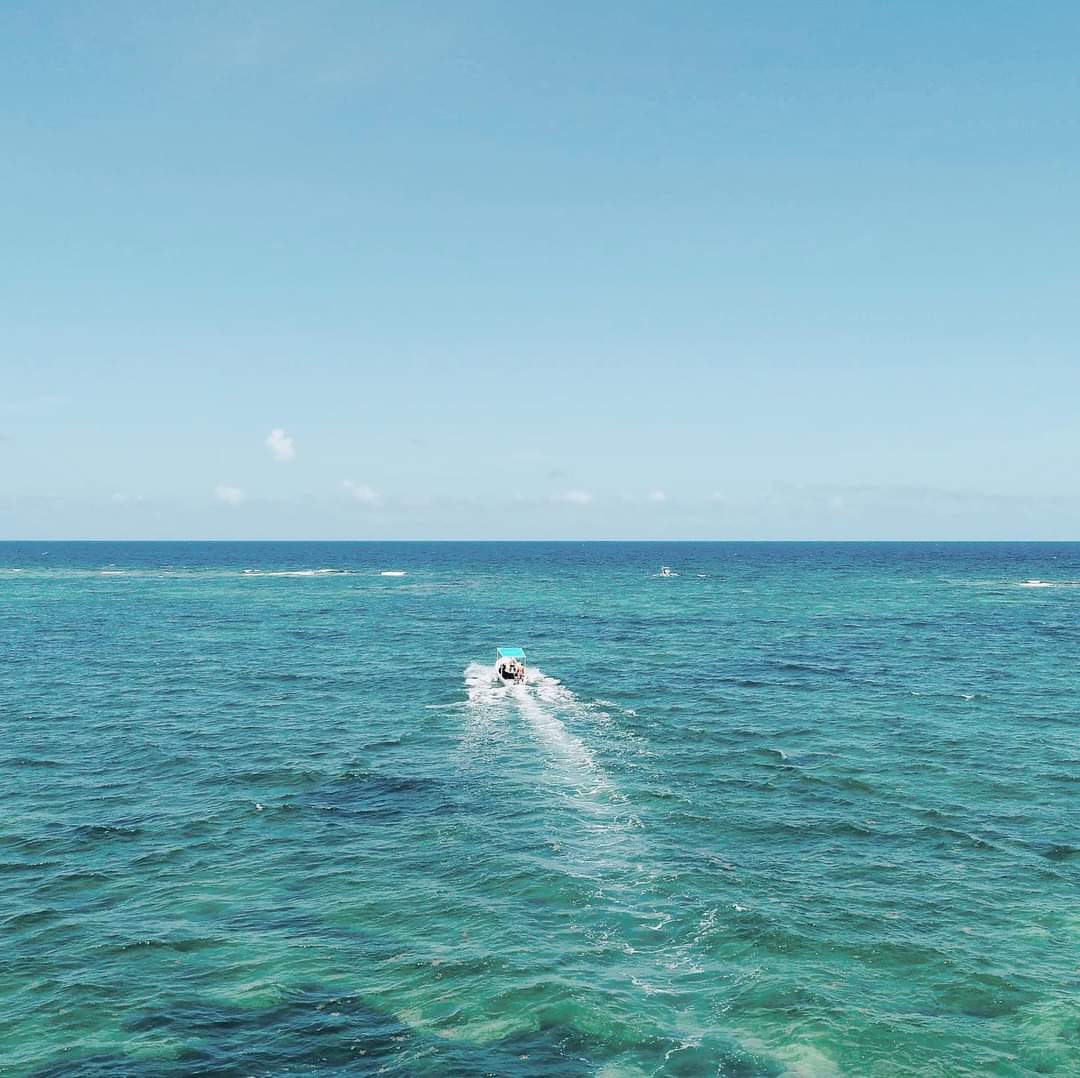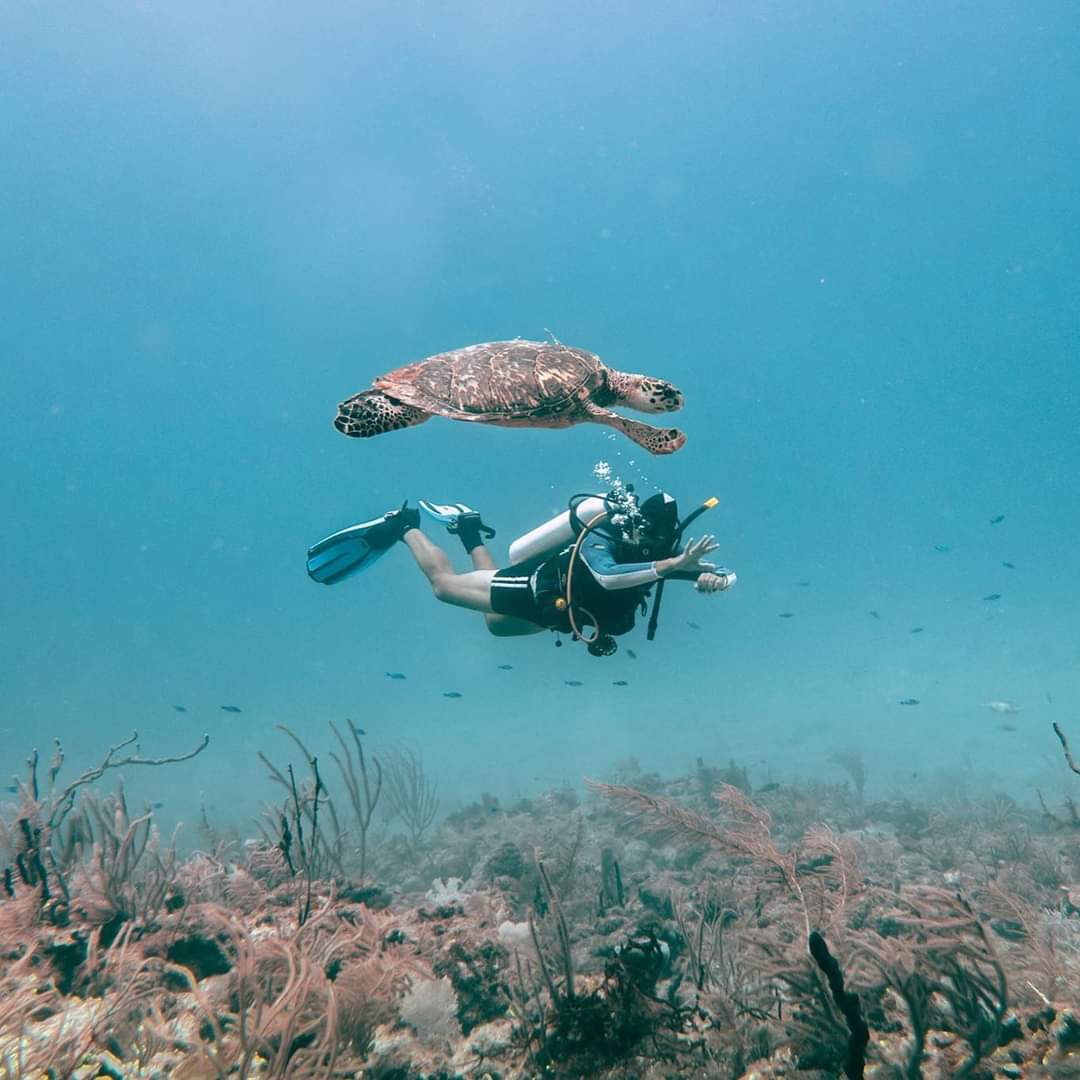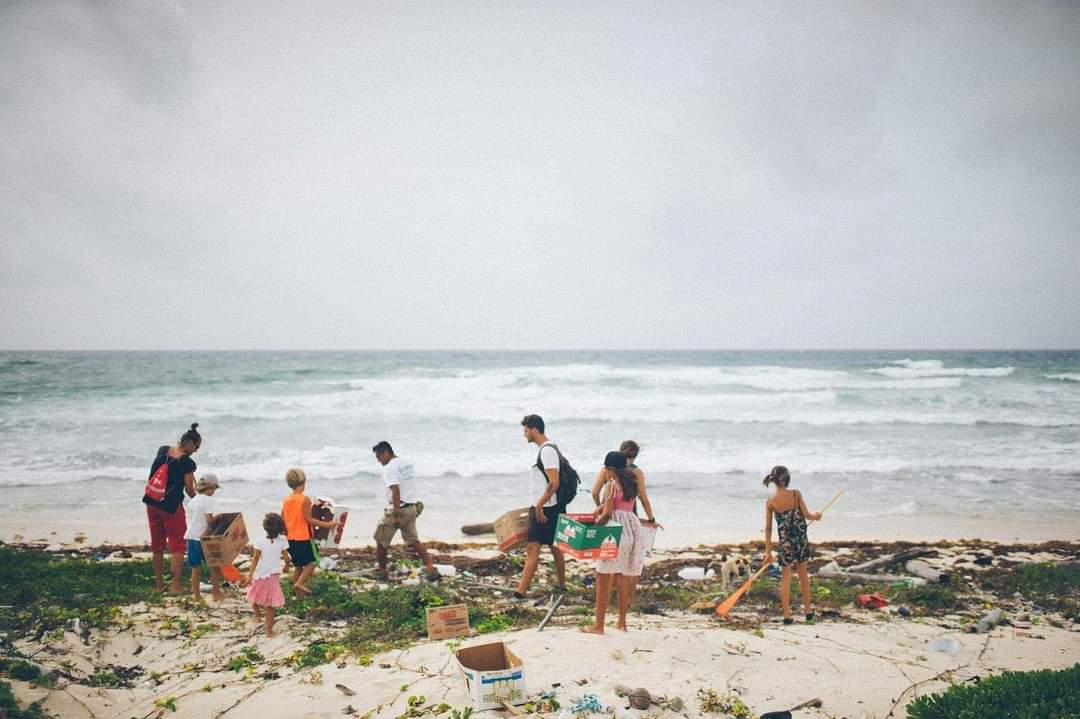Blogs
Jupiter Shark Dive (Watch Video)
Florida has one of the largest concentrations of sharks in the world, with sharks present year-round. The Sunshine State is known to have tiger sharks, great hammerheads, bulls, scalloped hammerheads, lemons, sandbars, reefs, black tips, makos, duskys and silky sharks either visiting or resident in its waters. Depending on the time of year many of these species can be seen on dive sites off of its Atlantic coast near Jupiter, earning it a reputation as one of the USA’s top shark diving spots.
Jupiter gained global notoriety for its annual lemon shark aggregation after featuring on BBC’s “Blue Planet 2”. Every year from December to late March lemon sharks follow the nutrient-rich Gulf Stream sweeping up Florida’s Atlantic coast. It is thought that they congregate near the coast here to mate and subsequently return to the mangroves of the Bahamas to give birth. Researchers actively documenting the aggregation have discovered that in addition to the lemon sharks, blacktips migrate in their thousands just offshore during winter. Given this abundance of life, it’s not surprising that divers and shark lovers gather here to witness these amazing creatures up close.
Sadly sharks are fished both commercially and recreationally from the Florida coast to the waters of the Bahamas. Getting people to view sharks as more valuable alive than dead is a major part of the conservation focus in Jupiter. Several local eco-tourism companies offer shark tours catering to divers, snorkelers and those wishing to view sharks from the comfort of a boat. With three international airports within driving distance and less than a 45 minute boat ride to most sites, if you want to get in the water and swim with sharks, this seems one of the easiest and most accessible ways to do it.
Recently Mike and I were fortunate enough to be transiting through Miami and thought it would be a great opportunity to delay our onward travel a few days to experience this amazing event. After a bit of research on the various dive and tour operators, we booked a snorkel trip with www.floridasharkdiving.com. Choosing to snorkel meant we could have good in-water interaction without any cages and also be able to fly out the next day without any offgassing concerns. This option also means families with non-divers have the opportunity to share the same experience.
We headed over to the marina on a sunny yet pleasantly cool morning to meet with our captain and other shark enthusiasts. With a stunning view of the Jupiter lighthouse across the waterway we were met by our friendly and efficient boat captain as the crew prepared our boat with supplies and introduced us to each other. Having signed in and completed the necessary paperwork, we split into 2 groups of 6 to keep the group sizes small. The boats were comfortable and fast and we enjoyed the cruise out of the Jupiter inlet and into the slight swell.
In under 30 minutes we were about 4 miles offshore at a site known for regular lemon and bull shark sightings. In fact, the company has nicknamed it “Lemon Drop” for its predictability. Our three crew consisted of the Captain, our in water guide and shark specialist and a second in water safety freediver, all very knowledgable and enthusiastic! On the way we were briefed on the boat safety features, what to expect on the upcoming experience and good in-water etiquette to keep both the sharks and ourselves happy.
We had expected to be waiting a while for the sharks to come in and investigate the boat, but less than 5 minutes after we arrived the first bull sharks were spotted below the surface, quickly followed by the call of “Lemon shark!” We donned our fins and masks and slipped into the water along a buoy line to join our toothy friends and get a better look. Our guide expertly drew the sharks towards us with a baited milk crate while also supervising the group, and we were soon totally absorbed watching a 3m long lemon shark and 15 or more bull sharks circling below and coming in for close passes.
My GoPro seemed to attract some of the sharks in, which gave me some fantastic close encounters, and an hour passed before we knew it. Mike took so many photos he ran out of battery and we were both so engrossed we hadn’t realised how fast the time had gone. We thrilled at being so close to so many large sharks, while they seemed perfectly at home cruising around us, eyeing these odd ungainly creatures bobbing on the waves in their blue domain.
Everyone was full of excited chatter on the return trip and we were escorted in by a squadron of pelicans seeking fishy scraps. For us it was a short trip and we were glad to have gotten to see 2 iconic species on our blue water drift. Later that week we heard that they were joined by some hammerheads too.
If you have more time in the area it would be well worth a diving trip to visit more local hotspots. Out on the deeper dive sites, large bull sharks can show up accompanied by groups of cobia. A full day’s diving could well produce lemon, tiger, bull, nurse and great hammerhead sharks. The opportunity to potentially see all these on a single day in the same location about a 45min ride from shore is pretty incredible. The Intracoastal Waterway also features manatees that can often be sighted enjoying the warm water, nurse sharks as well as osprey hunting from above and the charismatic pelicans. It is certainly an area worth taking the time to visit.
In the winter, the waters off Jupiter average around 24°C. This means most divers will feel comfortable in a 5mm wetsuit. Dive operators recommend full wetsuits, gloves and hoods as well as the water will be a bit cooler at 30m. Gear can be rented if you are traveling light and the trip can be planned to include other great dives if you have time to spare. A multitude of wrecks and reefs await in the Keys, just a short drive south down the US 1. Wildlife enthusiasts can visit the everglades, drive to the west coast to do a manatee snorkel in Crystal River, or for more shark action of a different kind, join a megalodon tooth hunt near Venice. The only big decision you have to make in Florida is which do you fancy doing first?
Blogs
Jeff chats to… Christopher Bartlett, MD of Indigo Safaris, about scuba diving in Dominica and Mexico (3 of 5)
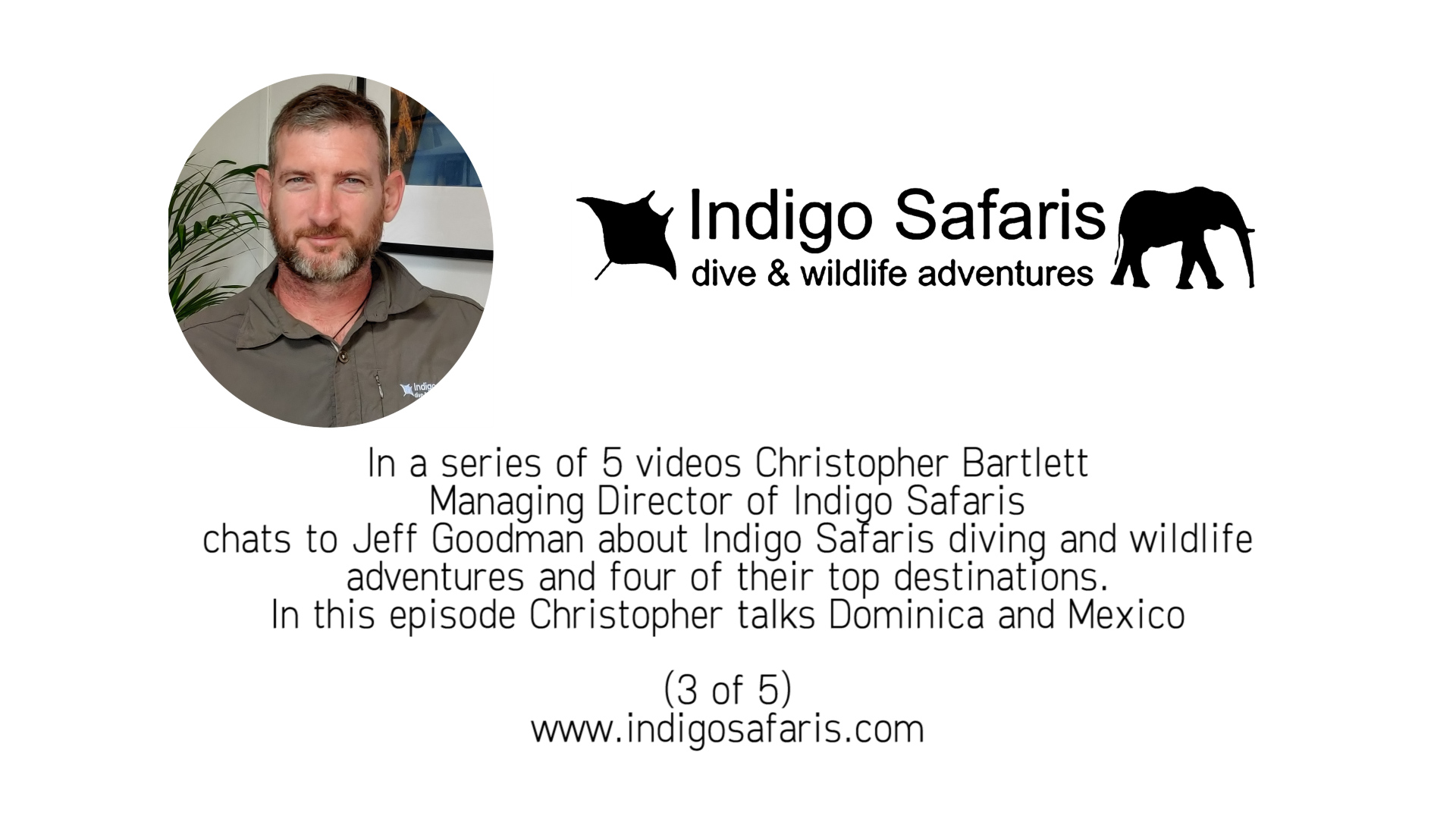
![]() In the third in this exclusive series of five videos, Jeff Goodman, Scubaverse Editor-at-Large, chats to Christopher Bartlett, Managing Director of Indigo Safaris, about their diving and wildlife adventures, and some of their top destinations. In this episode Christopher talks about Dominica and Mexico.
In the third in this exclusive series of five videos, Jeff Goodman, Scubaverse Editor-at-Large, chats to Christopher Bartlett, Managing Director of Indigo Safaris, about their diving and wildlife adventures, and some of their top destinations. In this episode Christopher talks about Dominica and Mexico.
For more information, please visit www.indigosafaris.com
Rather listen to a podcast? Click on this link to listen HERE.
Blogs
Diving with… Pablo Calderon Cadiz, Takata Experience, Mahaual, Mexico
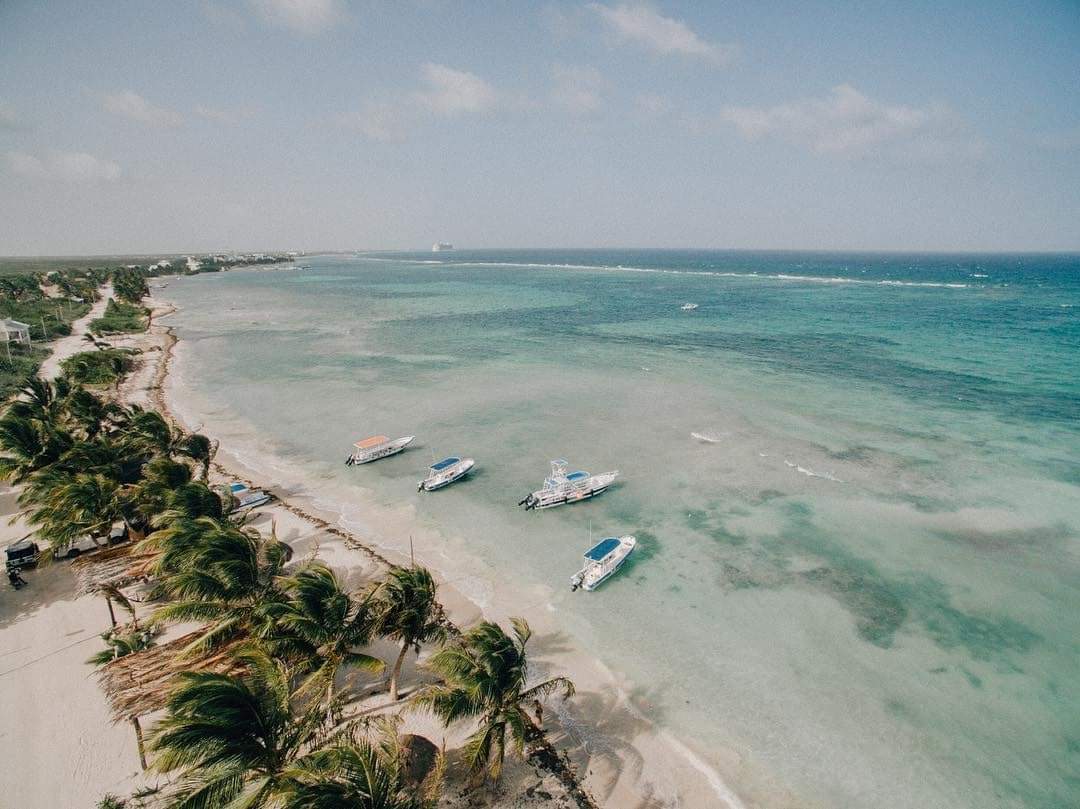
In this ongoing series, we speak to the people who run dive centres, resorts and liveaboards from around the world about their businesses and the diving they have to offer…
Pablo Calderon Cadiz
What is the name of your business?
Takata Experience
What is your role within the business?
Owner / General Manager
How long has the business operated for?
6 years
How long have you dived for, and what qualification are you?
I have been diving for 16 years; I am a PADI IDC Staff Instructor
What is your favorite type of diving?
I really enjoy all types of dive but deep dives and dives with crazy topography are by far my favourites.
If you could tell people one thing about your business (or maybe more!) to make them want to visit you what would it be?
We are a dive center and also a research center, so we merge both into one big idea. When you dive with us you also benefit the reef, as we put part of that money into our restoration program. We are also one of the only dive centers in the world that has a full research center working together with us. That’s why our official hashtag is #Divewithpurpose
What is your favorite dive in your location and why?
My favorite dive in Mahahual is Piratas, because of the beautiful topography and the amount of big animals you can see, such as turtles, manatees and sharks.
What types of diving are available in your location?
One of the best things about Mahahual is that there are dive sites for all levels, from shallow reefs with beautiful life to walls that can go down to 150 meters within 5 minutes from the shore. You can always choose what you want, if you are looking for biodiversity, topography, shallow sand patches or very deep walls, we have them all.
What do you find most rewarding about your current role?
The diving industry is an industry that is constantly evolving and from my role I am able to always bring that to Takata. I am always looking for ways to create a solid business culture, to make sure the people that work for us can always develop themselves from a professional perspective, but also from a personal one. We have created many different programs that are unique to us, where we merge the dive and research center. All that is possible because I can take those decisions. To see how your dream becomes true is the biggest reward ever.
What is your favorite underwater creature?
Sharks are my number 1, and if I can be more specific, Hammerheads!!!
As a center what is the biggest problem you face at the moment?
I feel that many dive centers in the world don’t know yet what makes them unique, so the way for them to attract people is to charge very low prices, sometimes that is very difficult, because the one that is next to you can charge 30% less than you for the ¨same service¨. I believe we should always find what is unique to us and to create a value on it. We should all focus on the professionalization of our industry.
Is your center involved in any environmental work?
As I mentioned before, we have a full research center, our director has 2 master degrees and our 2 biologist both have PhDs. Actually our research center was name as Actor for the UN Decade On Ecosystems Restoration for the next 10 years.
Our research center works together with the Mexican government to ensure a sustainable development in the area and to implement big scale conservation and restoration projects in Mahahual.
Are there any exciting changes / developments coming up in the near future?
As we are a new company, there are always exciting thing coming our way, in these years we became an IDC center, UN partners, we did a small hotel and we are looking forward to develop our research center even more. We would like to become the biggest research center in Mexico which is very ambitious and to become leaders in diving, restoration and everything that involve costal ecosystems. We dream big because we love what we do.
How do you see the SCUBA / Freediving / snorkeling industry overall? What changes would you make?
I think the industry is doing ok but not great. For sure freediving has grown a lot in the last 10-15 years. There are several organisations around the world who do great work, but we need more people and businesses looking to do the exceptional. Sometimes talking with diving friends around the world, we all agree that this is probably one of the few industries where the prices we charge are the same or even cheaper than 5 or 10 years ago. We urgently need to proprofessionalize the industry and put the correct value on our product and services.
Finally, what would you say to our visitors to promote the diving you have to offer?
If you guys are looking for a unique immersive experience where you can mix your passion for diving with deep understanding of marine and costal ecosystem, then we are your choice.
Where can our visitors find out more about your business?
You guys can follow us on IG: Takata.experience
Our website is: www.takataexperience.com









